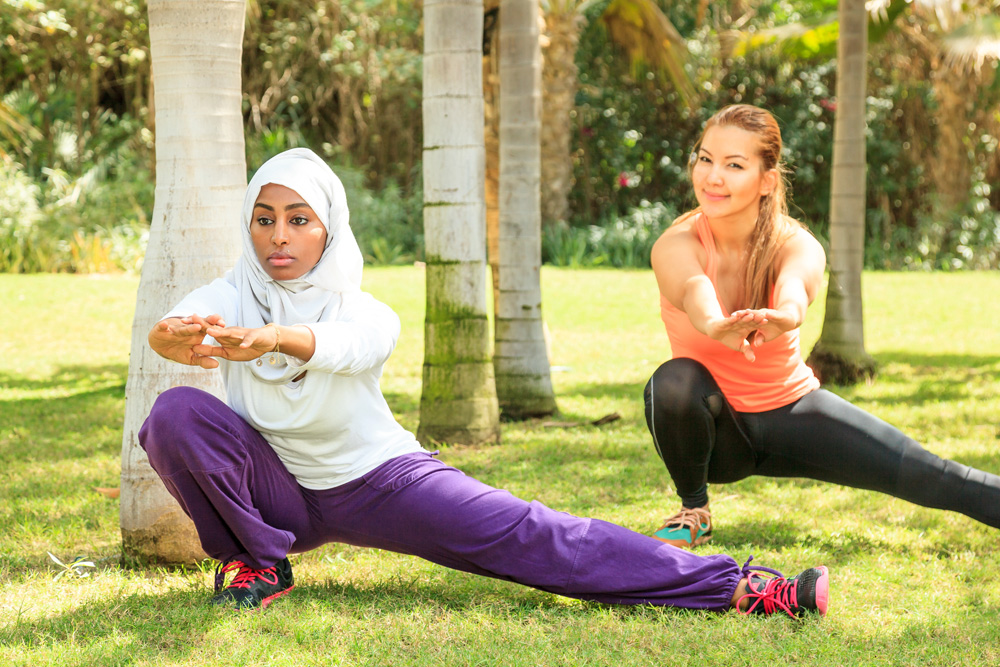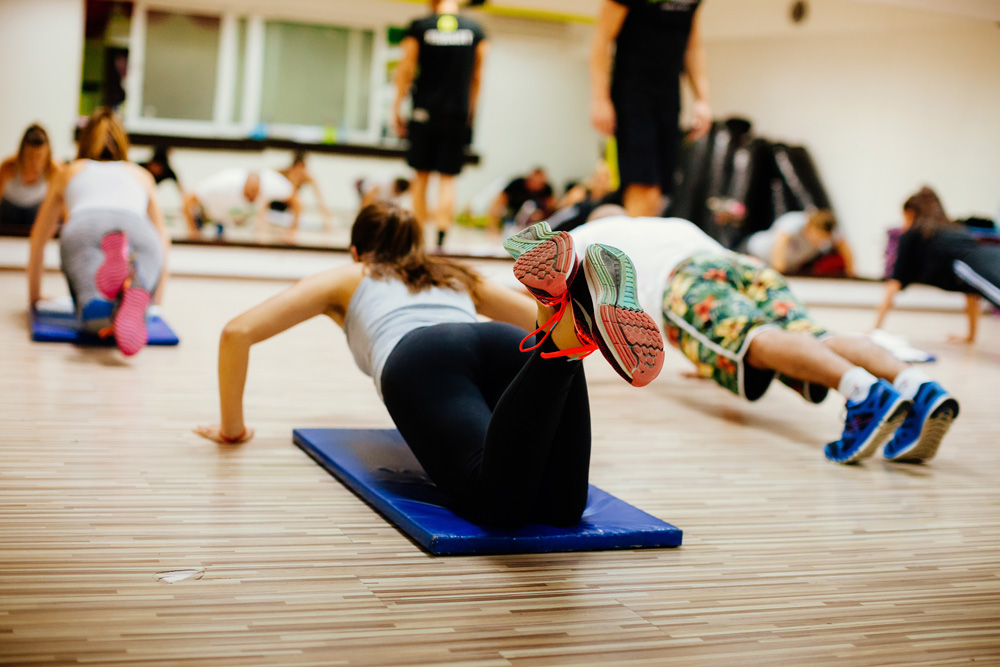
People have been abuzz about high-intensity interval training (HIIT) for the last couple of years and it’s still the number one fitness trend, according to the Worldwide Survey of Fitness Trends for 2018. That’s probably because it’s ultra effective and efficient, with the time saving aspect being the best benefit for most people.
HIIT (pronounced hit) mixes up short bursts of high-intensity activity (about 20-40 seconds) with less hardcore moves or total rest in between. One of the reasons everyone’s been raving about it is that it works with a broad number of workouts, for example intermittently sprinting during a typical jog or biking at a really high intensity for 30 seconds, then going at a more leisurely pace for about a minute. If you prefer the gym or home workouts, the options are limitless as you can custom design your own HIIT workouts every time. For example, you can do jumping lunges, jump rope or burpees for your high intensity intervals and crunches or walking for low intensity. What’s more, you can combine HIIT with bodyweight exercises, and there are so many fitness apps to choose from, you can fit it in wherever and whenever, from the park to the hotel room.
As well as being an example of working smarter rather than longer, there’s a range of benefits that comes with choosing HIIT. The fat burning powerhouse boosts speed and strength, plus it’s an effective way of increasing cardiovascular fitness, sculpting and toning your whole body and improving metabolic rate, a key to staying trim. Here are some of the best reasons to try it:
Burns more calories and fat, in less time
With all that exertion and asking more and more of your body, you burn more calories in a short space of time compared to other workouts. According to a study in the “Journal of Strength and Conditioning Research,” you burn 25 to 30 percent more calories during a HIIT session than you do while resistance training, cycling or running on the treadmill. And apparently, in just 15 minutes of HIIT you can see more results than jogging on the treadmill for an hour. This allows you to spend a lot less time in the gym while seeing amazing results. So busy bees can manage to fit in a workout at any point of the day, even during lunch break.
As well as torching more calories, HIIT workouts enable you to burn more fat in less time than endurance activities. This is possible because it gets your body to start burning fat for energy instead of carbs, according to a study in the periodical “Sports Medicine Open.” Research published in the “Journal of Obesity” has also proved you burn more fat, with the publication stating participants who did three 20-minute HIIT workouts a week lost nearly two kilograms of fat in a 12-week period.
Revs up metabolism and increases oxygen consumption
With those powerful spurts of energy, your metabolism accelerates because it slowly normalises itself afterwards rather than instantly returning to the normal rate of expenditure. As it gets back to normal, you get the benefit of burning calories at a higher rate than normal, even while you’re back at your desk. Studies show your metabolism stays in a heightened state for up to 24 hours after your workout.
Your metabolism also fires up more than when you do a sustainable exercise like a long jog because you’re using more oxygen. When you get to the point where it’s difficult to breathe, your metabolism starts working at a higher level. This increase in oxygen consumption is important as it enhances your cardiorespiratory system’s ability to efficiently use oxygen. An effective cardiorespiratory system helps when you’re faced with a surprising situation and have to suddenly run.
Fortifies the heart
HIIT helps heart health as turning up the concentration during training makes your heart work harder. And just like other muscles, this makes it stronger. A survey by the American Council on Exercise found Tabata workouts, a form of HIIT training, effectively boost cardiovascular strength. Plus, the “British Journal of Sports Medicine” has reported HIIT may even more than double cardio fitness enhancement compared to average -intensity workouts.

Regulates blood sugar
While eating healthily to maintain your blood sugar levels is important, joining HIIT enthusiasts as they test their limits can help as well. A review of 50 studies revealed HIIT enhances insulin resistance more than that steady bike ride or run.
Lowers blood pressure
If you have high blood pressure, you’re increasing your risk of cardiovascular disease. According to the publication “The Physican and Sportsmedicine,” one way to reduce blood pressure is to try some HIIT workouts. The journal reported eight weeks of 20 minute HIIT workouts, three times a week, is as effective as continuous exercise for 30 minutes, four days a week, when it comes to lowering blood pressure. HIIT classes are also great for preventing the ailment.
A word of caution
While HIIT produces undeniable results, it’s important to find out if you’re conditioned for it by talking to a doctor. There’s always a risk of injury or suffering from a condition like rhabdomyolysis with high-intensity workouts, especially if there’s a lack of flexibility, mobility and core strength or you have muscle activation issues.
If you haven’t been exercising for a while, it’s much better to start with some low impact exercises like walking or cycling for a couple of months. It’s also healthier to start HIIT with longer rest periods and shorter higher intensity work intervals and then keep on tweaking your work-to-rest ratio as your body adapts and get stronger. Plus, HIIT should not be done more than three times per week, especially if you’re unfit or on the large side, because it is so strenuous on your nervous system, joints and muscles.
















